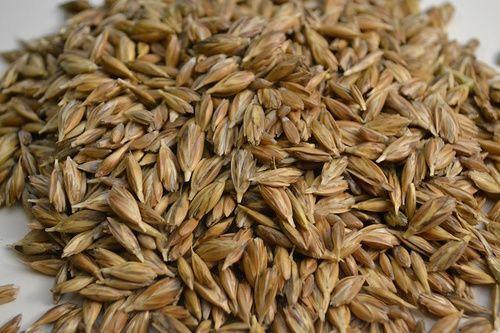Spelled (Triticum dicoccum) is a cereal belonging to the grass family. Rich in nutrients, it also has a high selenium content which counteracts free radicals. Let's find out better.
> 1. Properties and benefits of spelled
> 2. Calories and nutritional values spelled
> 3. Ally of
> 4. Production and diffusion of spelled

Properties and benefits of spelled
Poor in essential amino acids, it is instead a good source of vitamins and mineral salts. Contains vitamins of groups A, B, C, E in addition to football, phosphorus, sodium, magnesium e potassium.
It is a good source of protein as well iron and it contains a lot of fiber. Its main property, however, lies in the content of selenium and phytic acid that counteract the action of free radicals, the main causes of aging and all forms of cellular degeneration, for example tumors.
Calories and nutritional values spelled
100 g of spelled contain 335 kcal / 1400 kj.
Furthermore, for every 100 g of this raw product we have:
- Water 10,40 g
- G carbohydrates 67,1
- Sugars 2,7 g
- 15,1 g protein
- 2,5 g fat
- Cholesterol 0 g
- Total fiber 6,8 g
- Sodium 18 mg
- Potassium 440 mg
- Iron 0,7 mg
- Calcium 43 mg
- Phosphorus 420 mg
Also discover the properties and how to prepare spelled bread
Farro, ally of
Intestine, heart, vessels.
Production and diffusion of spelled
Little used in almost the whole country, however, spelled is very popular in Tuscany, in particular in Garfagnana where it is used in many different recipes, from appetizers to desserts.
The production costs of spelled are quite high and this justifies the sale price on the market which is higher than that of other cereals.
With the name spelled, both Triticum dicoccum, the real spelled, and Triticum spelta, the so-called farricello or false farro. Farricello, although very similar to real spelled or great spelled, does not have the same properties. Since they are both marketed under the name of spelled, it is not easy to distinguish them, or at least it is not easy before having them cooked.
Farricello, also called spelta, can be cooked even without soaking it first and tends to get kneaded during cooking, while real farro maintains a slightly hard heart, even when cooked.
A recipe up your sleeve
Spelled goes well with vegetables and can be used in recipes to replace rice, for example, to prepare farrotti or rich fillings for tomatoes, peppers or other vegetables.
During the hot season it is the ideal ingredient for tasty salads, while in winter it is perfect for soups and soups.
Spelled can also be consumed simply boiled and seasoned with a spoonful of extra virgin olive oil and a pinch of salt. It is also perfect for replacing pasta in soups.
Properties, use and benefits of spelled flour
Other articles on spelled:
> Spelled salad: 5 quick recipes
> Spelled soup: three healthy and tasty recipes
> Pearl spelled, how to cook it
> Spelled among foods against high cholesterol
> Food ingredients according to the Kousmine method
> How to cook with cereals
> Spelled macaroni with smoked Malta salt
> How to cook spelled
> Spelled, a rich cereal but beware of gluten
> How to cook spelled in the pressure cooker
> Einkorn or enkir spelled, properties and how to use it


























